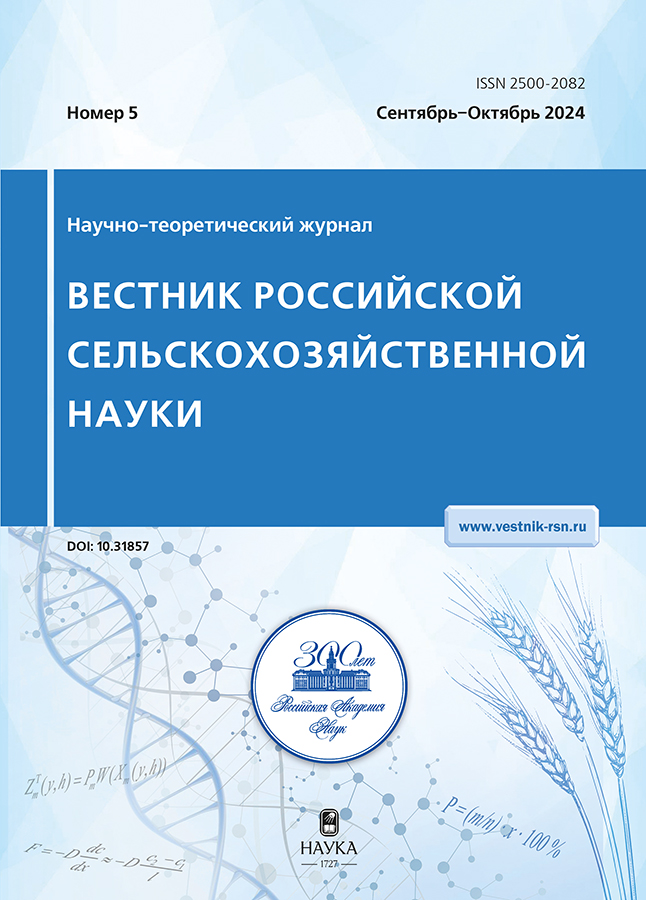Molecular and morphofunctional bases of development of the horse multiple congenital eye anomalies with the silver gene presence on the example of the Soviet draft breed
- Авторлар: Borisova A.V.1, Ramazanov M.V.2, Teleshova E.B.2
-
Мекемелер:
- All-Russian Research Institute of Horse Breeding
- Federal State Budgetary Educational Institution of Higher Education “Astrakhan State Medical University”
- Шығарылым: № 5 (2024)
- Беттер: 89-94
- Бөлім: Zootechnics
- URL: https://vietnamjournal.ru/2500-2082/article/view/659255
- DOI: https://doi.org/10.31857/S2500208224050184
- EDN: https://elibrary.ru/zrzijv
- ID: 659255
Дәйексөз келтіру
Аннотация
The article concretizes clinical data on the molecular and morphofunctional foundations of the development of multiple congenital eye abnormalities (MСOA) linked to the silver gene, using the example of the Soviet heavy-duty horse breed. Recommendations for owners on their maintenance and medical support and work with them are provided. The study was conducted on the basis of data from the VNIIK breeding center for the specified horse breed, genetic testing and ophthalmological examination. The focus group included 26 horses of the Soviet heavy-duty breed, examined for the presence of the silver gene. The results of the study showed that horses of the Soviet heavy-duty breed should undergo genetic testing for the presence of a silver gene in the genotype. However, the presence of MCOA linked to the silver gene is not an indication for the culling of horses due to the status of this breed as endangered, if it is necessary to select a mate for mating without genetic abnormalities so that they do not spread during uncontrolled crossing. Regular observation of an ophthalmologist and strict implementation of his recommendations are necessary to prevent the development of infectious complications and rapid progression of the disease with the onset of blindness. Horses homozygous for the silver gene should be kept in conditions that limit the possibility of injury to the eyeballs, including secondary damage to eye structures by the UV spectrum of solar radiation, for which translucent/opaque masks or sunglasses should be used. Working on homozygous horses with partial or complete loss of vision is potentially dangerous and possible only if a number of conditions are met and the owner is ready to bear legal responsibility for possible consequences.
Толық мәтін
Авторлар туралы
A. Borisova
All-Russian Research Institute of Horse Breeding
Хат алмасуға жауапты Автор.
Email: vniik63@mail.ru
ORCID iD: 0000-0003-0034-8747
PhD in Agricultural Sciences, Senior Researcher
Ресей, Divovo village, Ryazan regionM. Ramazanov
Federal State Budgetary Educational Institution of Higher Education “Astrakhan State Medical University”
Email: vniik63@mail.ru
ORCID iD: 0009-0001-4125-4758
PhD in Biological Sciences
Ресей, AstrakhanE. Teleshova
Federal State Budgetary Educational Institution of Higher Education “Astrakhan State Medical University”
Email: vniik63@mail.ru
ORCID iD: 0009-0001-8936-0824
PhD in Medical Sciences
Ресей, AstrakhanӘдебиет тізімі
- Borisova A.V., Teleshova E.B., Ramazanov M.V. Strategija selekcionnoj raboty s malochislennymi porodami s uchetom geneticheskih anomalij na primere sovetskoj tjazhelovoznoj porody // Konevodstvo i konnyj sport. 2023. № 6. S. 17–20.
- Andersson L.S., Axelsson J., Dubielzig R.R. et al. Multiple congenital ocular anomalies in Icelandic horses // BMC Veterinary Research. 2011. Vol. 7 (21).
- Andersson L.S., Wilbe M., Viluma A. et al. Equine Multiple Congenital Ocular Anomalies and Silver Coat Colour Result from the Pleiotropic Effects of Mutant PMEL // PLoS One. 2013. Vol. 8 e75639. https://doi.org/10.1371/journal.pone.0075639
- Depecker M.С., Ségard E.М., Cadoré J.L. Phenotypic description of multiple congenital ocular anomalies in Comtois horses // Equine Veterinary Education. 2013. Vol. 25 (10). РР. 511–516.
- Johansson M.К., Fegraeus K.J., Lindgren G., Ekesten B. The refractive state of the eye in Icelandic horses with the Silver mutation // BMC Veterinary Research. 2017. Vol. 13 (1). Р. 153
- Komáromy A.М., Rowlan J.S., La Croix N.С., Mangan B.G. Equine Multiple Congenital Ocular Anomalies (MCOA) syndrome in PMEL17 (Silver) mutant ponies: five cases // Veterinary Ophthalmology. 2011 Vol. 14 (5). РР. 313–320.
- Matthews A.G. Multiple congenital ocular anomalies and the silver dapple gene // Equine Veterinary Education. 2013. Vol. 25 (11). РР. 556–557.
- Oosterlinck M., Grebert A., Gielen I. et al. Post mortem magnetic resonance imaging of multiple congenital ocular anomalies in a Comtois mare // Equine Veterinary Education, Early View. 2015.
- Premont J.Е., Andersson L., Grauwels M. Multiple congenital ocular anomalies syndrome in a family of Shetland and Deutsches Classic ponies in Belgium // Equine Veterinary Education. 2013. Vol. 25 (11). РР. 550–555.
- Ségard E.М., Depecker M.С., Lang J. et al. Ultrasonographic features of PMEL17 (Silver) mutant gene-associated multiple congenital ocular anomalies (MCOA) in Comtois and Rocky Mountain horses // Veterinary Ophthalmology. 2013. Vol. 16 (6). РР. 429–435.
Қосымша файлдар















